M92, Globular Cluster
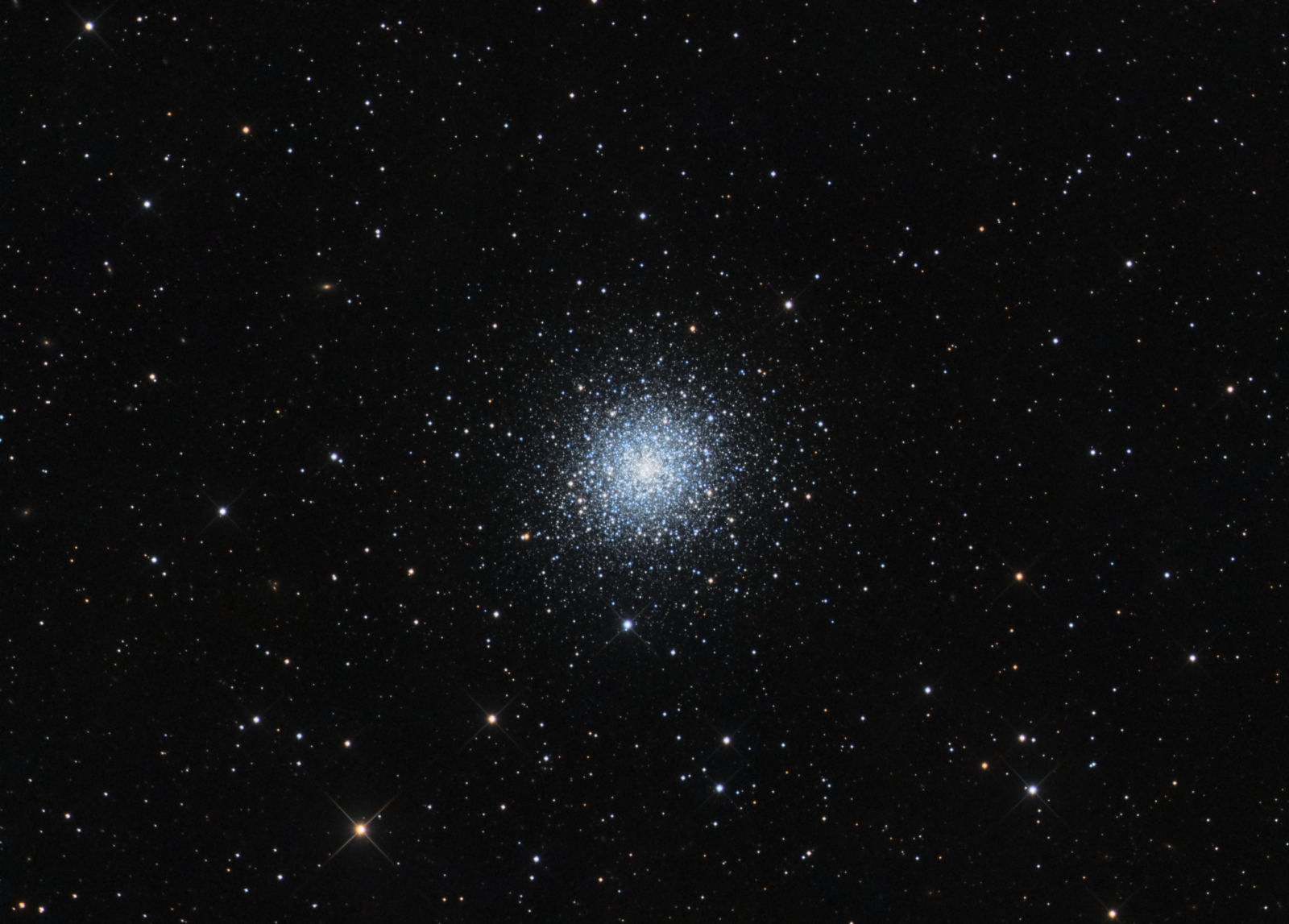 Click image for full size version
Click image for full size version
June 11, 2015, SkyNews Photo of the Week, June 26, 2015
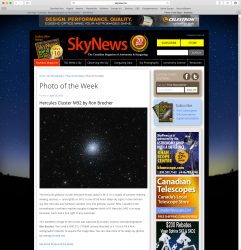 While flipping through my atlases and images trying to decide on my next target, I came upon M92, a bright globular cluster in Hercules, not far from more famous M13. A 2010 image of M92 taken with a one-shot colour camera and a refractor was one of the first images I ever had published. But I have not shot it since getting my mono camera and ASA astrograph.
While flipping through my atlases and images trying to decide on my next target, I came upon M92, a bright globular cluster in Hercules, not far from more famous M13. A 2010 image of M92 taken with a one-shot colour camera and a refractor was one of the first images I ever had published. But I have not shot it since getting my mono camera and ASA astrograph.
Even in a very dark sky, most stars seem pretty bland to the naked eye as far as colour is concerned. There are some exceptions, like orange-red Betelgeuse, reddish Antares, and yellow Arcturus, but most look white. However, all stars have colour, which is related to their temperature. The coolest stars are red, with hotter stars being orange, yellow and white. Blue stars are the hottest of all. M92 contains hundreds of thousands of stars, and many are blue. Also have a look around the image for the many galaxies scattered around this field.
This gem is a beauty visually through a telescope, but it often gets ignored because it lies so near the bigger and brighter M13. The Great Hercules cluster may be impressive (it really is), but I’ll take M92 any day. Several astrobuds and I had a good look at M92 last Friday night through my 20″ reflector. Even through the big scope I see virtually no colour in this object. But WOW is it ever pretty. It looks like someone spilled diamond dust on a black table cloth.
Tekkies:
SBIG STL-11000M camera, Baader RGB filters, 10″ f/6.8 ASA astrograph, Paramount MX. Guided with STL-11000’s external guider and 80 mm f/6 Stellar-Vue refractor. Acquisition and guiding with Maxim-DL. Focusing with FocusMax. Automation with CCDCommander. Calibration, cosmetic correction, registration, integration and all processing in PixInsight. Shot from my SkyShed in Guelph, Ontario. No moon, good to very good transparency and fair to average seeing throughout acquisition.
22x10m R, 22x10m G and 19x10m B unbinned frames (total=10hr30m).
RGB:
Creation and cleanup: R, G and B masters were cropped and DBE was applied to each before combining to make an RGB image. ColourCalibration was applied.
Stretching: HistogramTransformation was applied to make a pleasing yet bright image.
HDRWaveletTransform was applied at a scale of 6 to a copy of the image, and blended 90:10 with the original.
Synthetic Luminance:
Creation and cleanup: The cropped and DBE-processed R,G and B masters were combined using the ImageIntegration tool (average, additive with scaling, noise evaluation, iterative K-sigma / biweight midvariance, no pixel rejection).
Deconvolution: A copy of the image was stretched to use as a deconvolution mask. A star mask was made from unstretched L to use as a local deringing support. Deconvolution was applied (50 iterations, regularized Richardson-Lucy, external PSF made using DynamicPSF tool with about 20 stars; local deringing at 70% and global deringing at 0.02).
Stretching: HistogramTransformation was applied to make a pleasing yet bright image. HDRWaveletTransform was applied at a scale of 6 to a copy of the image, and blended 90:10 with the original. TGV Noise was applied and the image was re-stretched to reset the black point.
Combining SynthL with RGB:
LRGBCombination was then used to apply the Luminance to the RGB, making a SynthLRGB image.
Final Processing
Colour saturation of the stars was increased. A range mask was used to apply a brightness and saturation boost only to the core of the globular cluster.
Image scale is about 1.1 arcsec per pixel for this camera / telescope combination.


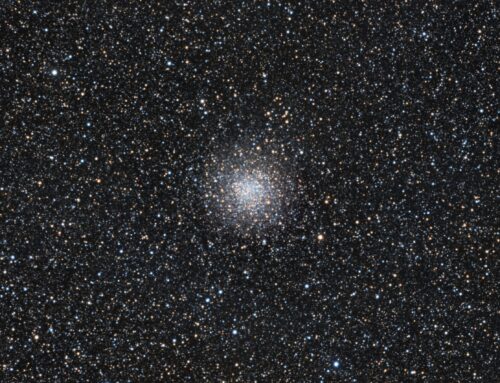

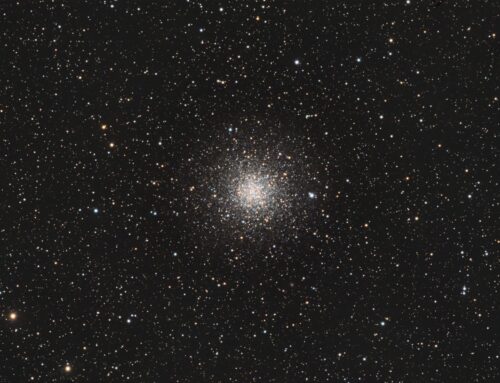
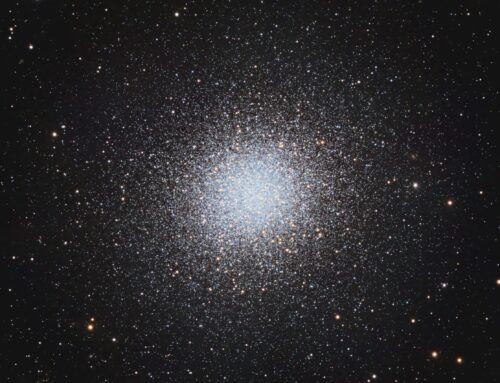
Leave A Comment